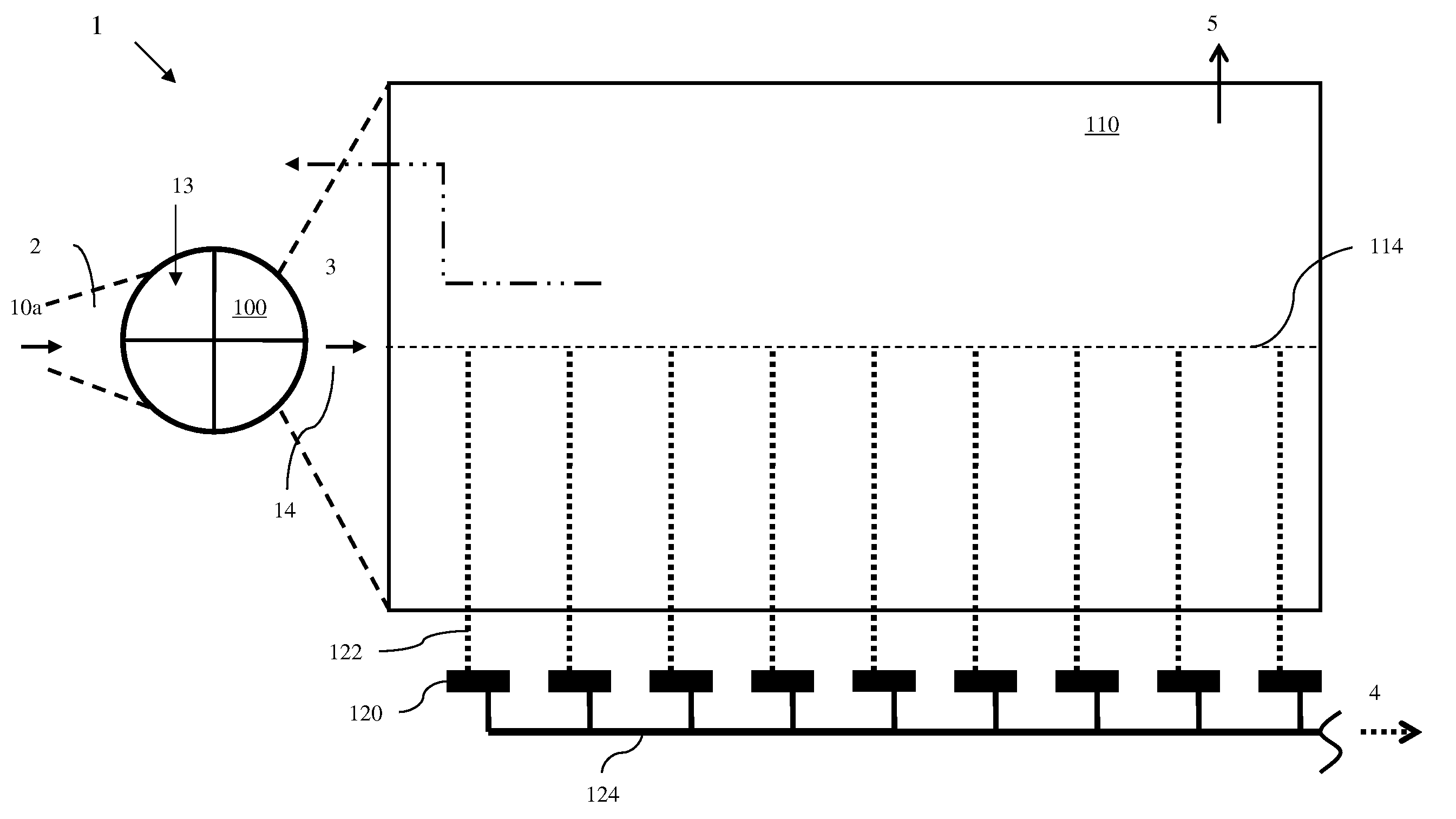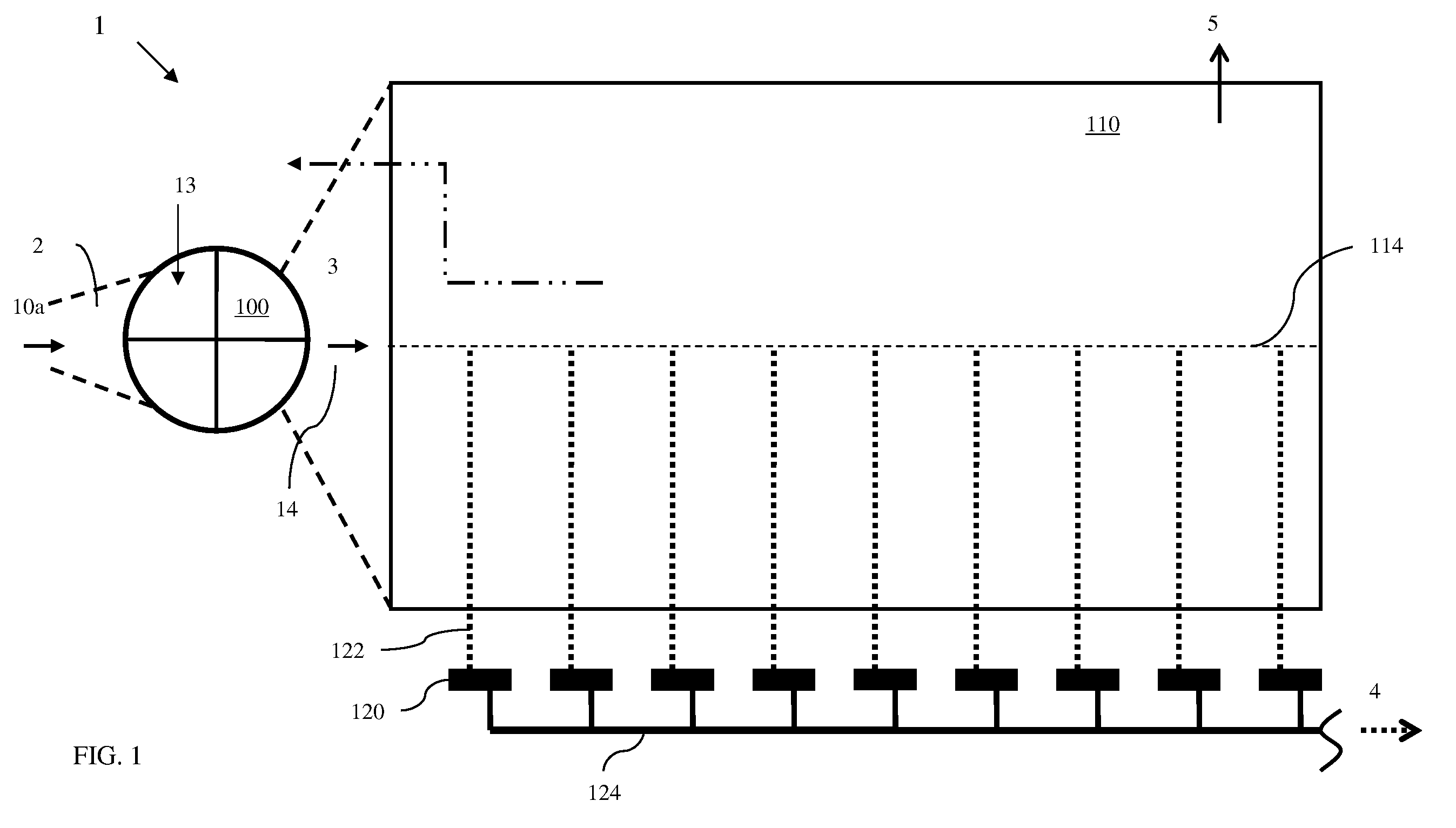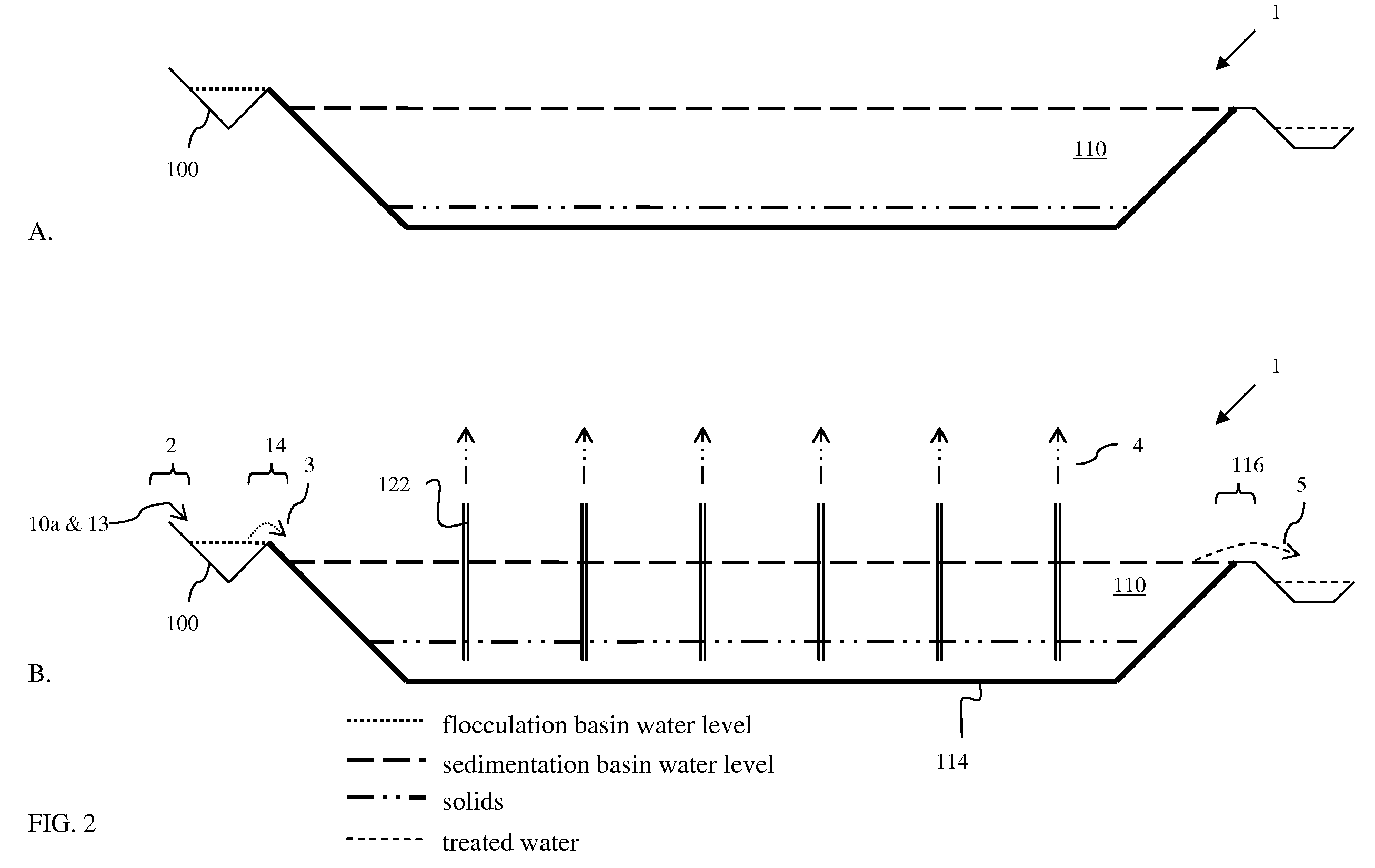Industrial waste water treatment process
a technology for industrial waste water and treatment process, which is applied in water treatment multi-stage treatment, water/sewage treatment, separation process, etc. it can solve the problems of contaminated water, excessive rainfall, and long time of abnormally heavy rainfall, so as to facilitate reuse or release into the environment, less expensive capital expenditure, and more concentrated solids
- Summary
- Abstract
- Description
- Claims
- Application Information
AI Technical Summary
Benefits of technology
Problems solved by technology
Method used
Image
Examples
Embodiment Construction
[0064]The present invention is directed to a process and associated systems of treating industrial waste water. The process and systems are most particularly directed to waste water resulting from wet process phosphoric acid production. Such waste water typically contains large quantities of gypsum, along with fluoride and silicon impurities, and other contaminants such as heavy metals. More generally, the process and associated systems taught herein are applicable to all operations in which the contaminants are initially precipitated utilizing a neutralizing substance appropriate for the characteristics of the waste water, such as lime or other reactive alkaline substance if the waste water to be treated is of an acidic character. The precipitated contaminants are produced as finely divided suspended solids that must be separated. The systems of the invention include flocculation and sedimentation basins created, within or near the waste deposit or other contaminated areas, typical...
PUM
| Property | Measurement | Unit |
|---|---|---|
| pH | aaaaa | aaaaa |
| pH | aaaaa | aaaaa |
| depth | aaaaa | aaaaa |
Abstract
Description
Claims
Application Information
 Login to View More
Login to View More - R&D
- Intellectual Property
- Life Sciences
- Materials
- Tech Scout
- Unparalleled Data Quality
- Higher Quality Content
- 60% Fewer Hallucinations
Browse by: Latest US Patents, China's latest patents, Technical Efficacy Thesaurus, Application Domain, Technology Topic, Popular Technical Reports.
© 2025 PatSnap. All rights reserved.Legal|Privacy policy|Modern Slavery Act Transparency Statement|Sitemap|About US| Contact US: help@patsnap.com



